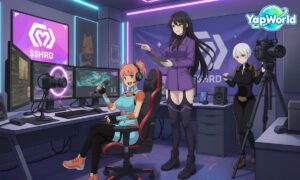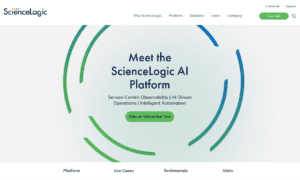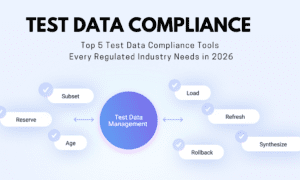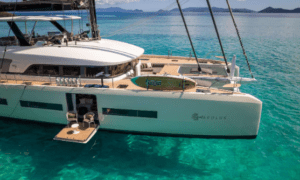Welcome to a mind-bending journey where the realms of reality and imagination collide! The emergence of mixed reality has opened up new doors for us to explore, pushing the boundaries of our perception like never before. In this blog post, we delve deep into understanding mixed reality in the metaverse, that vast digital universe where virtual and real worlds coexist harmoniously. Get ready to unlock the secrets behind this captivating phenomenon as we unravel its fascinating intricacies and ponder the endless possibilities it presents. Join us as we embark on an adventure that blurs the lines between what is real and what is imagined, igniting your curiosity every step of the way!
Introduction: What is Mixed Reality in the Metaverse?
In recent years, there has been a growing interest in Mixed Reality (MR) and its potential applications in the Metaverse. The term “Mixed Reality” was first coined by Microsoft researcher Paul Milgram, and it refers to a hybrid of real and virtual worlds where physical and digital objects coexist and interact in real time.
While the concept of MR is still in its early stages of development, it has already begun to impact a variety of industries, including entertainment, education, healthcare, retail, and more. For example, the popular video game Pokemon Go is an example of MR technology being used in the gaming industry. In the healthcare field, hospitals are using MR to create immersive training simulations for medical students.
The metaverse is a term that was first coined by science fiction writer Neal Stephenson in his 1992 novel Snow Crash. It refers to a shared virtual space where users can interact with each other and with digital content. Think of it as a cross between the internet and reality.
There are many different ways to experience the metaverse, depending on which Mixed Reality headset you use. For example, the Oculus Rift offers users an immersive VR experience, while the Microsoft HoloLens provides augmented reality capabilities. No matter which headset you use, MR allows you to blur the lines between reality and imagination.
What are the Goals of Mixed Reality?
There are many potential goals for mixed reality, but some of the most intriguing possibilities revolve around its ability to blur the lines between the physical and digital worlds. For instance, mixed reality could be used to create more immersive and interactive gaming experiences or to enable people to interact with virtual objects in a real-world setting. Additionally, mixed reality has the potential to transform the way we communicate and collaborate by providing a more realistic and lifelike way to connect with others online.
Examples of Mixed Reality in the Metaverse
Mixed reality is a term that is used to describe the ability to blur the lines between the physical world and the digital world. It is a way to create an environment where users can interact with both the real world and the virtual world.
There are many examples of mixed reality in the metaverse. One example is Second Life, which is a virtual world that allows users to interact with each other in a 3D environment. Another example is Google Earth, which allows users to view satellite images of the earth in a 3D interface.
Mixed reality has also been used in education and training simulations. For example, soldiers can use mixed-reality simulations to train for combat situations. Medical students can use mixed-reality simulations to practice surgery.
Mixed reality has endless potential applications in the metaverse. As technology continues to develop, we will likely see even more examples of mixed reality in the metaverse.
How Can We Use Mixed Reality to Enhance the User Experience?
As we continue to explore the potential of virtual reality, we are also beginning to see the potential for mixed reality. Mixed reality is a term that describes the blending of the physical and virtual worlds. Unlike virtual reality, which creates a completely immersive experience, mixed reality allows users to interact with both the physical and virtual worlds simultaneously.
There are many potential applications for mixed reality, but one area where it shows particular promise is in user experience design. User experience designers are always looking for ways to make their products more intuitive and easy to use. Mixed reality has the potential to enhance the user experience in a number of ways.
For example, imagine you’re designing a new software application. With mixed reality, you could allow users to try out the application in a simulated environment before it is released. This would give users a chance to get a feel for how the application works and provide feedback that could be used to improve the design.
Mixed reality can also be used to create more immersive and interactive experiences. For example, you could use mixed reality to create an augmented reality where users can see information about their surroundings overlaid on their view of the world. You could also use mixed reality to create interactive 3D environments where users can explore and manipulate objects in ways that are not possible in the real world.
The possibilities for how mixed reality can be used to enhance the user experience are endless. As we continue to explore this new technology, we will no doubt find even more ways to
What Does the Future Hold for Mixed Reality in the Metaverse?
Mixed reality is a rapidly evolving technology with vast potential for application in the Metaverse. While its current applications are mostly limited to gaming and entertainment, there is a great deal of potential for mixed reality to be used for other purposes in the future. As the technology improves and becomes more widespread, it is likely that we will see more and more mixed reality applications emerge.
Some of the potential applications for mixed reality in the Metaverse include:
- Virtual shopping experiences that allow users to try on products before they buy them
- Interactive educational experiences that immerse students in learning environments
- Collaborative work spaces that allow remote workers to interact with each other as if they were in the same room
- Dynamic event spaces that can be reconfigured on the fly to suit the needs of any event
The possibilities for mixed reality in the Metaverse are nearly limitless. As the technology continues to develop, we can expect to see even more amazing and innovative applications emerge.
It is an exciting time for mixed reality, and the future looks bright!
Conclusion
Mixed reality is an exciting new technology that has the potential to revolutionize how we interact with each other and perceive our surroundings. It will open up a world of possibilities for virtual exploration, helping us explore boundaries that are not limited by physical space or time. By understanding mixed reality and its potential implications, we can unlock the power of the metaverse and create incredibly immersive worlds full of possibility.



































